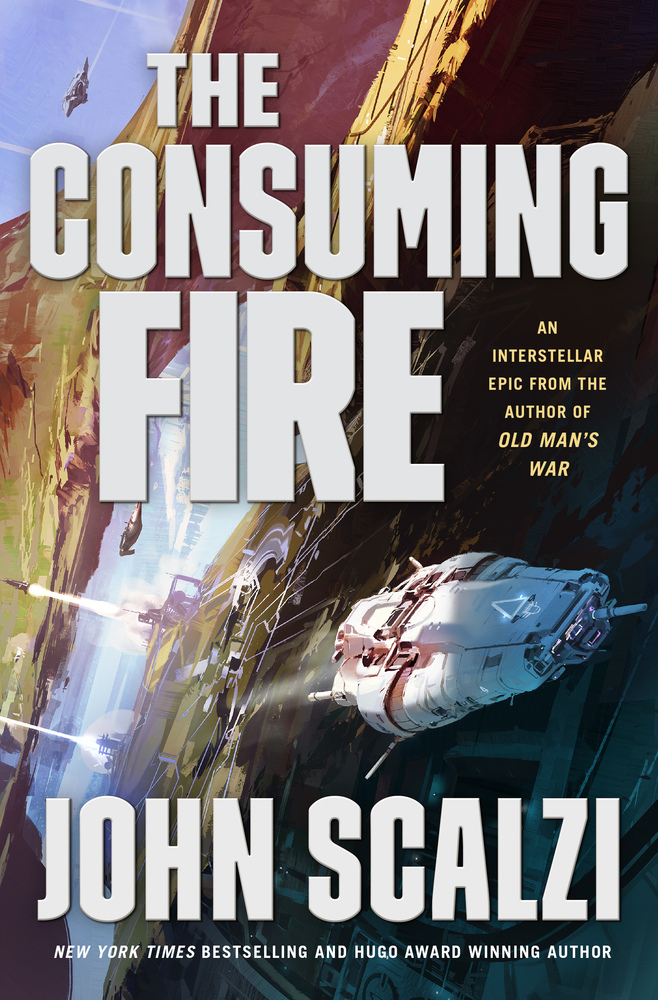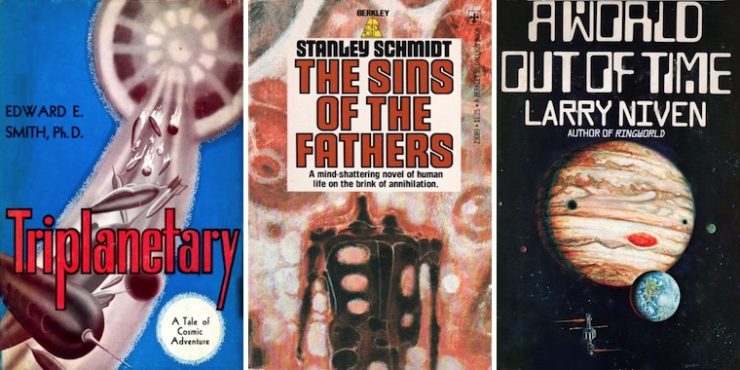Has this ever happened to you? You’re living on a perfectly good planet in orbit around a perfectly acceptable star—and then suddenly, the neighbourhood goes to crap and you have to move. For a lot of people, this means marching onto space arks.
Recapitulating Noah on a cosmic scale is such a pain, though. All that packing. All that choosing who to take and who to leave behind. And no matter how carefully you plan things, it always seems to come down to a race between launch day and doomsday.
Why not, therefore, just take the whole darned planet with you?
(Warning: spoilers for books that are all insanely old venerable.)
Of course, this raises the question of how to do this without destroying the world. You could just slap rockets on one end of the planet (and at least one author did) but the side effects of that method could well be…undesirable. Authors have wrestled with the problem and come up with answers ranging from the utterly implausible to the somewhat less plausible.
For E. E. “Doc” Smith, the solution was easily enough. Simply have supremely intelligent aliens provide humans and other races with the means to negate inertia, through the use of engines that could be scaled up without limit. Put down on paper like that, it seems so obvious . To quote A Mighty Wind, “You would make that conclusion walking down the street or going to the store.”
But…even though shuffling planets into stable orbits in Goldilocks zones would be a wonderful first step towards terraforming, Smith’s characters instead focus on moving planets into Goldilocks zones to smash them into other planets inhabited by nogoodnik species. Nothing says hello like a planet in the face at half the speed of light, unless it’s a planet of negative matter in the face, etc.
Smith was writing about a cosmic war. Stanley Schmidt’s Sins of the Fathers involved an unfortunate industrial mishap in the core of the galaxy, one that converted the Milky Way into a Seyfert galaxy (which were all the rage back in the 1970s). The Kyyra (the aliens responsible) had been methodically working their way through the Milky Way giving as many races as possible the means to escape. Unfortunately for Earth, the means by which the Kyrra chose to do this was time-consuming; by the time they got to us, a lethal wave of radiation was very nearly upon the Earth.
Buy the Book


The Consuming Fire
Rather remarkably, given that the setting does have faster-than-light travel (necessarily, because otherwise the first warning Earth would have got that a lethal wave of radiation was on the way would have been the arrival of said lethal wave of radiation), the Kyyra don’t simply slap a Smith-style FTL drive on the Earth. Instead, they use a much more conventional (although highly advanced) means of reaction propulsion: big-ass rockets on the South Pole. Schmidt helpfully provided the math arguing that one could attach a rocket to Earth sufficient to accelerate it enough to save the planet without also rendering it lifeless in “How to Move the Earth” in the May 1976 Analog. Well, sorry…
Larry Niven’s A World Out of Time returns to the war theme. It also marries Smith’s love of spectacle with Schmidt’s desire for a patina of plausibility. The Solar System of several million years from now has been radically transformed. The Sun is a red giant well ahead of schedule and the Earth is in orbit around Jupiter. How did this happen?
[Highlight for spoilers]: Niven postulates a humongous fusion rocket. But rather than stick it on the Earth, with all the issues that would raise, he places it in Uranus, then uses the gravity of the dirigible planet to move the Earth. Enemies of the Earth had used similar methods to hurl a planet into the Sun, thus the premature red-giantism.
[End spoilers.]
As it happens, while we seem to be short on universal wars and galactic-scale mishaps, there is at least one reason why we might want to think about how to move the Earth . Stars like our sun grow brighter as they age. Not terribly quickly—about one percent per hundred million years—but enough that the Earth may be uninhabitably hot in just a billion years (plus or minus). Given that the Sun won’t become a red giant for another five billion years, that seems … wasteful. Why not simply move the Earth farther from the Sun to compensate for the increased luminosity?
Thanks to people like D. G. Korycansky, Gregory Laughlin, Fred C. Adams (authors of Astronomical engineering: a strategy for modifying planetary orbits) we have some idea of what moving the Earth might entail. It turns out to be surprisingly reasonable (bearing in mind “it” is moving an entire world literally the size of the Earth): a suitably large intermediate body (a main belt asteroid or a Kuiper Belt Object) is used to transfer momentum from Jupiter to Earth. Jupiter drops a little; the much smaller Earth rises away from the Sun by more. One encounter every six thousand years might be all that’s needed .
It would be tremendously cool if we had evidence of a Galactic Club in the form of regular adjustments in Earth’s orbit (if only because if the Earth had been moved over the last few billion years, it would help explain the cool sun problem). Rather irritatingly, when I asked around I was assured we’d be able to tell if someone had been engineering our orbit and that there is no such evidence. How vexing. Really letting the side down, Galactic Club .
This is all rather academic for a species that thinks in terms of weeks or months, but still, we might not be the only technological species to occupy the planet over the next billion years. Perhaps one of our replacements will have the necessary time-binding horizons to get the job done.

1: It does seem a bit odd that inertialess matter travels at superluminal speeds and not the speed of light. Presumably the handwaving math would explain why it works like that.
2: Two. “BECAUSE IT WOULD BE AWESOME” is also a valid reason.
3: Or, if you don’t like the idea of regular near-misses from dinosaur killers, there’s also the option of much more frequent encounters with smaller objects. One wonders if one could use a similar method to shuffle worlds like Mars and Venus into more useful orbits. And if any SF author has set their stories in a well-managed solar system, cultivated like a garden… No recent examples are coming to mind, but my memory is notoriously poor.
4: Lots of SF uses one impossible idea to good effect so if you can hang a story off that idea, feel free to use it. Ideas are cheap.
In the words of Wikipedia editor TexasAndroid, prolific book reviewer and perennial Darwin Award nominee James Davis Nicoll is of “questionable notability.” His work has appeared in Publishers Weekly and Romantic Times as well as on his own websites, James Nicoll Reviews and Young People Read Old SFF (where he is assisted by editor Karen Lofstrom and web person Adrienne L. Travis). He is surprisingly flammable.










